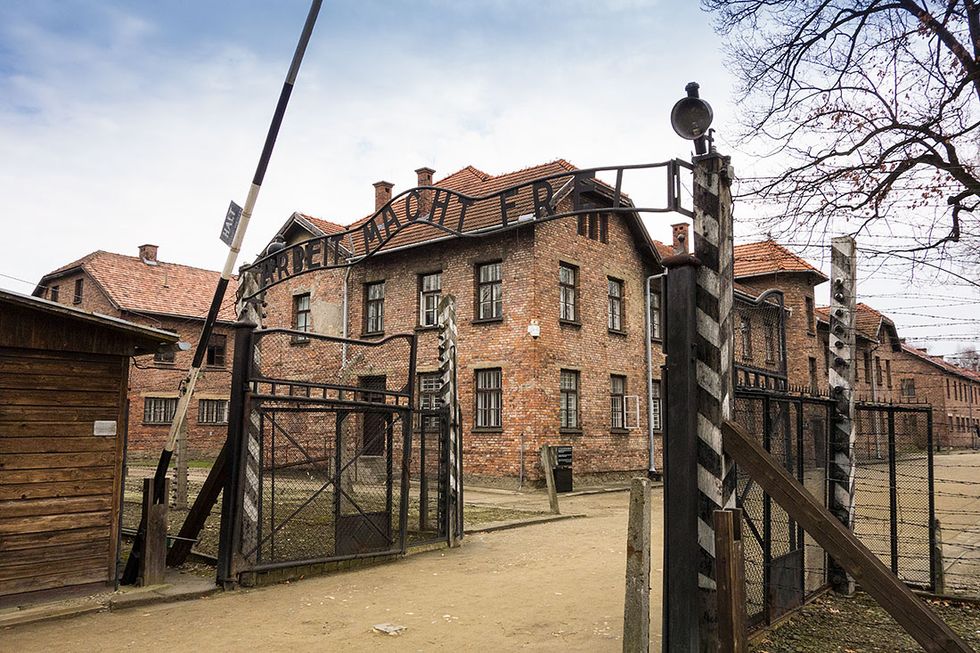I had read about the Holocaust in school, listened to former teachers explain the progression of Nazi rule, and visited Holocaust museums in Orlando, D.C. and Israel, but seeing the horrors in person made it all the more sickening, raw, and terrifying. A textbook cannot describe the nausea that crept up my throat as I stood in the Majdanek gas chamber, where blue spots still splattered the walls from the gas that killed thousands. A picture cannot describe the pain of starvation and Nazi cruelty the way a survivor can. A museum cannot depict the ghosts within the now hallow unused synagogues. Poland is empty now, filled with the memory of what once was and the generations that could have been.
I traveled to Poland with a group called Living Links, a program led by Chabad International to show Jewish college students the tragedies that a museum, textbook, and movie cannot. Together with a group of 65 from all over North America, we walked along the Auschwitz train tracks that had carried our ancestors to the gas chambers, stood in a cattle car that Jews had been sandwiched in and deported to their deaths and cried beside a mass grave of 800 children. At each of those sites, we prayed, sang the songs they once sang in synagogue, or at night before they went to bed. And as we continued on, we sang Matisyahu’s “One Day’, which always brought tears to my eyes. The group held everyone together, offering shoulders to cry on, the beacon of light among the darkness.
My question was always why. Why did people hate the Jews so much? Throughout history, we were expelled from practically every country across Europe, massacred, picked on. Besides merely exist, what did we do? What drove a human being to kill others so senselessly, to split up families, to intentionally murder infants who could barely walk and speak, to want to exterminate a group? How could people create facilities—concentration camps—with the purpose of instilling death and fear? How could this happen? It hurts to ask these questions, and but it’s important to remember.
We say, “never again”, but it’s still happening. Look at Rwanda. Darfur. Even in our own country, we see violent hatred—the Charlottesville rally, the Pulse shooting, among other vile acts.
On one of our nights in Krakow, a group of Poles shoved two people, punched one in the face, and screamed, “You are not welcome here!” On another, they flashed white supremacy signs at us. I remember walking through a Polish market and seeing Jewish magnets and dolls with the stereotypical large noses, carrying a prayer book and a bag of money, as if he had just robbed a bank.
I look around my world, at the dolls making fun of me, the people being slaughtered for no reason, at the prevalent bullying and at the fear of terrorism. This is 2018. Why can’t we learn?
After returning to the United States, I spent a day walking around New York City, thinking and contemplating. I sat on the subway, stopped by Kosher restaurants, and gazed at the bright blue sky, the sun which I hadn’t seen in a week. I watched the abundance of people slipping past, people of all kinds, colors, living side by side with their own lives. I stayed with my friend who attends Stern College, a Jewish women’s school and stopped by the Spanish Portuguese synagogue by Central Park.
And then, standing right there, in the middle of the busiest city in America, it hit me. Before our plane took off to Poland, Rabbi Zalman, one of the leaders on our trip, said, “You can cut off all the flowers, but you can’t stop the spring from coming.” In New York, I saw that spring. I saw parents pushing children in strollers, people rushing to their jobs, families in line to climb up the Empire State building, and shops bustling with tourists. And when I think of Gainesville, I think of my incredible professional business fraternity, Alpha Kappa Psi, which welcomes people from all backgrounds, as well as my booming Chabad House which gathers around 300 every Friday night for dinner.
The Nazis tried to destroy us, yet we are here stronger than ever. We never lost our spirit.
















